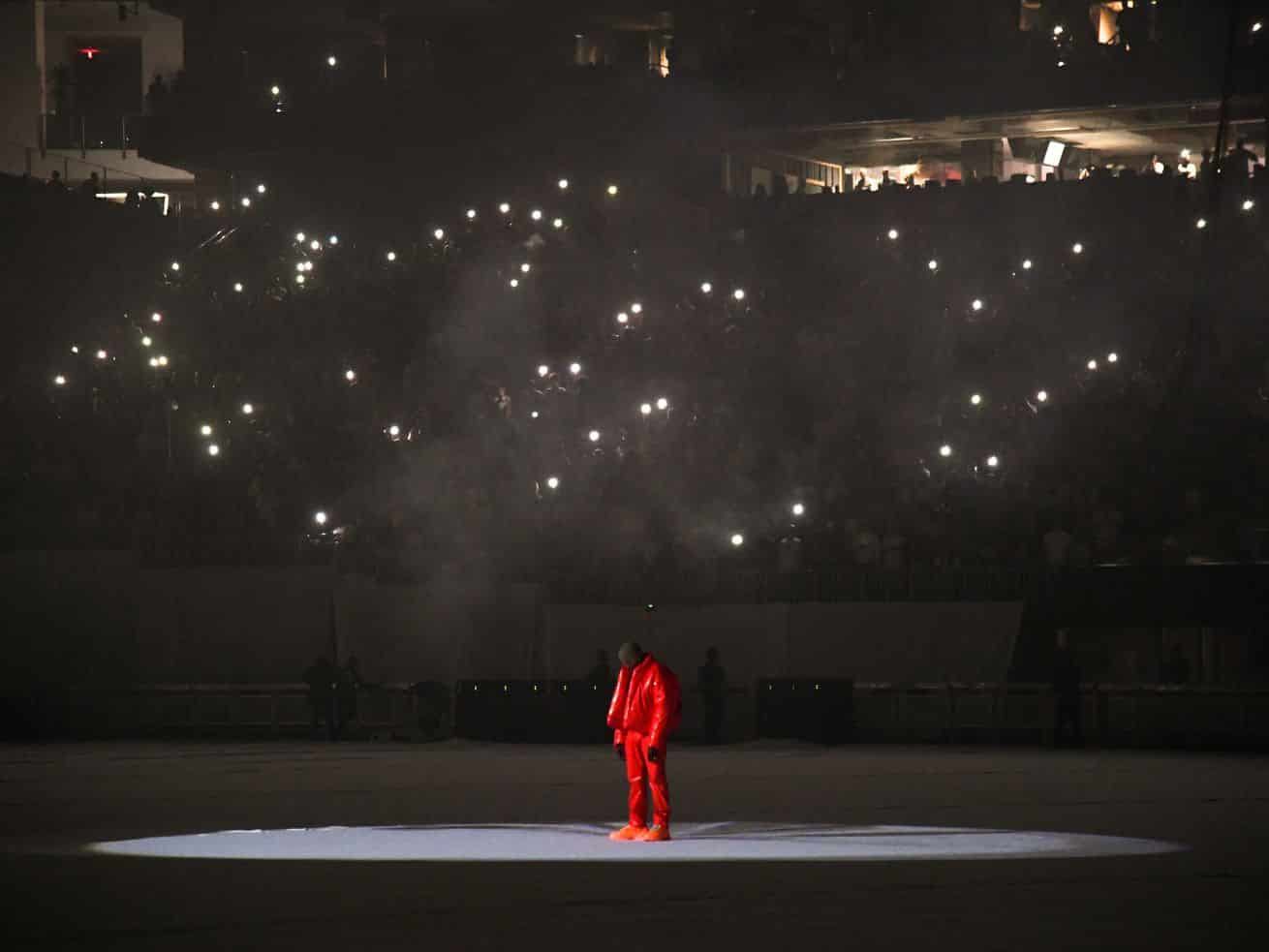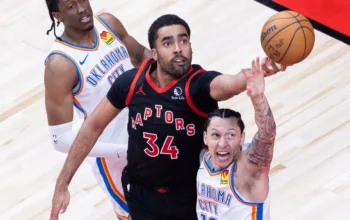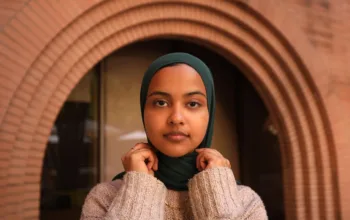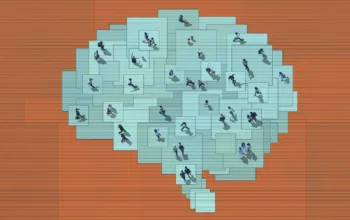Kanye’s new album Donda spent the last 18 months in flux — just like Kanye himself.
So what’s the deal with Donda? Did Kanye West’s label really release it without his permission? Did Kanye really light himself on fire over it? What about the TikTok panic that he inducted the huge audiences at his listening parties into some dark occult ritual?
These aren’t the typical questions you associate with an album release, but Kanye West isn’t a typical artist, and his new 27-track album, Donda (named after Kanye’s late mother Donda West), isn’t a typical album.
Reportedly in production for the last 18 months, Donda has had a rocky road to release, as delay upon delay befell the album’s production and Kanye wrestled with a high-profile divorce, mental health battles, and clashes with his album collaborators.
The release delays after an initial July 23 drop date helped give Donda one of the most drawn-out and lucrative hype cycles for a release in recent memory. A string of pre-release listening parties saw thousands of listeners flocking to stadiums in Atlanta and Chicago for dramatic previews of the album. (The listening parties quickly became a form of elite cultural currency, with fans who attended treating each concert like a bougie Met Gala; you can reportedly buy air from the concerts if you have $60,000 or so.)
When it was finally released early in the morning on August 29, Donda smashed first-day streaming records and claimed the second-biggest Spotify album debut in history, racking up 94 million and 60 million streams on Spotify and Apple Music respectively. The album is already on track to score the biggest debut of 2021, although Drake’s forthcoming album Certified Lover Boy, due out on September 3, might immediately challenge Kanye’s sales title. How those two giants wound up going head to head with back-to-back album releases is an additional part of Donda’s mystique. But even if Drake’s Friday release eclipses Kanye’s, it likely won’t top Donda for sheer intrigue.
That’s because Donda seems to be generating more and more buzz as the days pass, as wildly polarized reviews have rolled in from critics, who say the album is disjointed and thematically incoherent, and fans who say it’s beautiful and a collaborative powerhouse. Meanwhile, Kanye himself has lashed out at his record label, Universal Music, in an Instagram post claiming the studio put out the album without his permission and even blocked one track, “Jail pt 2,” from the initial release.
With the album, its rollout, and Kanye himself all in such a state of upheaval, Donda may be less an album and more of a seminal pop culture event. Still, it can provide insight into Kanye’s continued popularity, despite his spending an erratic few years making headlines for everything but his music. With Kanye veering between politics, spirituality, and the music career that made him a legend, Donda has had a long, wild road to creation — and its public and critical reception are proving to be just as unpredictable.
Donda, like its creator, spent most of the last two years in flux
Initial recording for Donda — the follow-up album to 2019’s Jesus Is King — reportedly commenced in Mexico in March of 2020, at which point Kanye was apparently planning to title the album God’s Country. News broke of the album’s existence a few months later, when cinematographer Arthur Jafa leaked the info during a radio interview.
On July 18, 2020, Kanye followed up Jafa’s leak by tweeting, then deleting, a track list for the album, with its title changed to Donda, along with a release date for the album set just six days hence, on July 24. However, much of the early information about the album and its contents seemed destined for retraction: Not only did Kanye rescind the initial release date, but of the 20 original songs he listed in his deleted tweet, only eight wound up on the final version of the album. A few days after his first tweet, he tweeted again, this time with a largely different track list, featuring 12 songs, six of which made the final album cut.
The initial July 24, 2020, release date came and went without comment, but throughout the next year, Kanye continued to drop hints and clips of songs he was planning to include, only some of which made it onto the final album. (In: “Believe What I Say.” Out: 2020 single “Wash Us In the Blood.”) Meanwhile, the second half of Kanye’s 2020 was raucous: In July he announced his last-minute presidential candidacy, shortly after which his wife Kim Kardashian revealed that Kanye, who had previously been diagnosed with bipolar disorder, had undergone a mental health evaluation following his first candidate rally.
As Kanye rushed to get his name on the ballot in time for the election, and as his marriage grew shakier, the album and its promotion fell by the wayside. By the beginning of 2021, the album seemed to be permanently on ice. Just weeks after Kardashian filed for divorce from Kanye in February, however, reports surfaced that Kanye was back in the studio and working on Donda. From there, a hype blitz unfolded, with various artists like Tyler the Creator and Pusha T promoting the album or their work on it.
On July 20, 2021, Kanye dropped the new planned release date during game six of the NBA finals, courtesy of a Beats ad premiering during the game that featured the album single “No Child Left Behind.” Kanye’s label Def Jam confirmed in a follow-up tweet that the album would be dropping in just three days, one day shy of a year from its original planned release date. Promotions followed: The city of Atlanta declared June 22 Kanye West Day as his first star-studded stadium livestream party, held that evening at Atlanta’s Mercedes-Benz stadium, made headlines.
Then, despite reports that Kanye had stayed behind after the first Atlanta party to work on finishing the album, the July 23 release date came and went. Kanye scheduled a second livestream listening party at Mercedes-Benz Stadium on August 5 and pushed the release date back yet again — this time to August 6. When that date came and went, confusion mounted as Donda’s preorder date shifted from August 13 to August 15 to August 22 to September 3. A third and final livestream party summoned fans to Chicago’s Soldier Field on August 26; it smashed the livestreaming viewership record, which had already previously been smashed by the August 5 listening party.
Amid the confusion over the album itself, the livestream parties offered an enticing glimpse of chaos in motion: Each listening party previewed a slightly different version of the album, with different mixes, track orders, a growing number of tracks, and different guests contributing different verses to different songs.
In addition, a coterie of A-listers turned up to join the parties, including Jay Z (who wrote his guest verse the day of the June 22 show), Pusha T, and Donda’s two controversial guest artists, Da Baby and Marilyn Manson. Da Baby has been heavily criticized for homophobic comments made during a recent Instagram Live session; Manson is currently facing lawsuits from multiple women alleging sexual assault; he has denied the allegations. Never one to shy away from spectacle, Kanye reportedly also wanted Trump to appear onstage with him.
For the final listening party, Kanye built a replica of his childhood home and then lit it completely on fire — and himself along with it. It was all a part of the act, and he’s fine — but this is likely the kind of theatrical flourish that has since spawned numerous TikTok conspiracies holding that Kanye used his listening parties to channeling everyone’s spiritual energy for some dark occult ritual.
After that dramatic display came a true head-turner: Kim Kardashian, whose divorce from Kanye is not yet finalized and who has remained close to the rapper, appeared onstage with Kanye, clad in a white Balenciaga wedding gown, albeit not the same gown she wore when the couple tied the knot in 2014. Even so, the apparent wedding recreation twist spawned intense speculation about whether the couple is reconciling. Not now, or maybe not yet? Seems complicated!
Considering all of the fun Kanye seemed to be having — and all the money he was making; the second party alone reportedly generated $7 million just from merch and ticket sales — it seemed plausible that he could have continued to host the listening parties indefinitely, continually tweaking the album’s soundscape and structure. In fact, one popular fan theory speculated that’s exactly what he intended to do, by creating “an album that has materialized itself into existence without being officially released.”
But then, according to Kanye himself, the timeline for the album’s release got taken out of his hands by the record label, Universal Music Group (UMG) — and things got even wilder.
Rap beef that can be packaged and sold pushed the Donda project over the top
The drop came two days after Drake, siding with himself in an ancient Pusha T/Kanye/Drake war, announced on August 27 that he would be dropping Certified Lover Boy in a week’s time — on September 3, the same day as the latest of Kanye’s many ever-shifting release date for Donda. Fans immediately were alert for a fight, since Kanye has been a longstanding ally of Pusha T in Pusha’s complex ongoing beef with Drake, and the threeway feud has recently heated up. Drake apparently dissed both Pusha and Kanye, calling them old and burned out in his guest verse on the Trippie Redd single “Betrayal,” which dropped August 21.
That same day, Kanye seemed to respond to Drake’s takedown in a since-deleted Instagram by screenshotting a group chat in which he called someone, probably Drake, a “nerd ass jock n****” and retorted, “You will never recover[,] I promise you.” Two days later, he went even further, briefly doxxing Drake by apparently posting, then deleting, the Canadian rapper’s Toronto address on Instagram. Drake’s fans later retaliated by vandalizing Kanye’s childhood home, the same one he theatrically burned to the ground on Soldier Field.
It all spelled beef with a capital B — but it also potentially spelled embarrassment for one or both of the rappers. Perhaps UMG producers considered Drake’s album release date to be a deadline; after all, for Kanye to continue his long, unblemished streak of debuting albums at No. 1 — to date, a nine-album streak matched only by Eminem — he probably shouldn’t go toe-to-toe with a Drake release in the same week.
Thus, abruptly and without any advance notice or fanfare, Donda appeared around 8 am ET on Sunday morning — hardly the kind of rollout you’d expect after such an intense and unusually long period of anticipation. Just hours later, Kanye exhaled a primal scream of rage on Instagram, declaring UMG had released the album without his consent:
It’s true that “Jail pt 2” initially did not appear on the streaming version of the album, perhaps due to the fact that its two guest artists, Marilyn Manson and DaBaby, have recently been embroiled in serious controversies. Shortly after Kanye’s post, the album itself apparently vanished briefly for some listeners before reappearing in full with all 27 tracks intact, including “Jail pt 2.”
As of now, it’s unclear whether Kanye intends to take further issue with UMG over the album’s release. Instead, plenty of artists are taking issue with Kanye over the final cut, most notably Soulja Boy and Chris Brown, who each had their guest verses cut from the finished product.
But despite all of the turbulence surrounding Donda’s release, the ultimate outcome seems to have been a giant win for Yeezy: He’s back in the spotlight for his music once more, and fans are here for it.
Donda is far from groundbreaking, but all things considered, it’s surprisingly buoyant
Critics largely seem to be exhausted by Kanye and the hype cycle that surrounds him. That fatigue might have torpedoed Donda’s reception in the media; Kanye’s dalliance with Trumpism also likely hasn’t helped. Many critics hate Donda and seem to be gleeful about hating Donda.
In part, the critic/public divide might be built around different expectations for very different streaming experiences. One of the chief critical complaints about Donda is that it’s aesthetically all over the place, disjointed both stylistically and thematically: “Its 27 tracks include euphoric highs that lack connective tissue,” wrote Pitchfork’s Dylan Green, “a data dump of songs searching for a higher calling.”
Although the words of Kanye’s late mother, recorded from a 2007 speech, serve as a motif throughout, they rarely create a throughline or connect to the ideas in the individual songs themselves. For every bop like “Jail,” “Believe What I Say,” or “Heaven and Hell,” for instance, there are cringey duds like “Praise God” (Baby Keem’s “I bada the boom, I bada the bing” rap is arguably the album’s low point) or “Remote Control,” which originally featured a whole Kid Cudi verse and a whole Soulja Boy verse before Ye inexplicably replaced both with Ye himself, singing apathetically about hovercrafts and CEOs.
But in an age where shuffled playlists take priority over complete albums, it may not matter that Kanye’s 27 songs aren’t exactly cohesive. Spotify, where Donda was streamed most, prevents all of its ad-supported mobile users from streaming albums in their original track order unless they have Spotify Premium — so most people didn’t experience Donda as a start-to-finish narrative. Twenty-seven songs is enough to guarantee a few surefire hits for nearly every listener — enough for a few songs to satisfy most fans, even if the album feels underwhelming as a whole.
Don’t get me wrong, the record as a unit is disjointed, but it’s also landing in a moment where it’s just not standard consumer behaviour to revere the record as a unit. You can, in effect, pick your own Kanye adventure (including the old Kanye, or the always rude Kanye)
— Elamin Abdelmahmoud (@elamin88) August 31, 2021
Even taken as a single entity, Donda has its pleasures. The roster of guests is truly impressive, from artists like The Weeknd and Roddy Ricch to top-level producers like “No Church in the Wild” producer 88Keys and veteran BoogzDaBeast. The album’s collaborations lend it much-needed depth, but they’ve also brought Kanye criticism, specifically for the lack of women collaborators. Short guest spots from Ariana Grande and Shenseea, so the argument goes, can hardly counter the overt misogyny of many of Kanye’s contributors. And while Kanye seems to use songs like “Lord I Need You” to work through the Kimye breakup, and of course channels his mother throughout, there seems to be little effort otherwise to make space for women’s voices or presence.
That’s not to say that Donda has no political conscience. Most prominent is the idea of separation and disrupted community, often brought about by incarceration. “Jail” and “Jail pt 2” tackle this idea somewhat cheekily (“God gon’ post my bail tonight”). But by the time Kanye is quoting the son of convicted gang leader Larry Hoover, whose bid for a reprieve from his life sentence failed earlier this year, the carceral state seems more like a collective, rather than an individual punishment.
Both Kanye and Kim have made prison reform, freeing inmates, and helping ex-inmates a cornerstone of their public platforms in recent years, so Hoover Jr.’s presence on Donda is an extension of that work. But it’s also an extension of Kanye’s individual grief for his mother, a displacing of his personal sorrow so that it joins with a larger collective sorrow for those loved ones with whom reunification is impossible.
Despite these moments of mourning, however, and the frequent intrusion of church organs as backing instruments, the album overall has a persistently mellow vibe. It’s as though Kanye’s spirituality has rendered him serene in the face of his own emotional vicissitudes. That overall upbeat outlook keeps Donda feeling lighthearted and self-aware — and when Kanye’s at his best, his wry self-awareness always engages his audiences. “Made the best tracks and still went off the rail,” he sings on the album standout, “Hurricane.”
That self-awareness just doesn’t carry over through much of the album. But perhaps that’s because Kanye’s just feeling too zen and self-assured — justifiably — to deliver the dramatic emotional shifts of previous albums. The album’s emotional zenith, “Come to Life,” packs enough of a punch to make itself felt as an expression of Kanye’s hope and sense of renewal, but the album’s overall trajectory ascends so little that it’s less of a soaring climax and more a gesture toward a fuller, more beautiful album — perhaps one that exists in an alternate universe where Yeezy hadn’t been pulled in wildly different directions throughout the past few years, and where his creative genius could have been focused on polishing Donda to its true potential.
Sure, lines like “Okay, okay, I’m not okay” aren’t his strongest effort. But considering that Donda was made during a pandemic, by an artist who this time last year was raising widespread alarm about his deteriorating mental condition, Donda feels pretty healthy. After watching Kanye’s increasingly erratic antics for the last year, it’s almost refreshing that Donda is so, well, normal — normal for Kanye West, that is.
Author: Aja Romano
Read More



